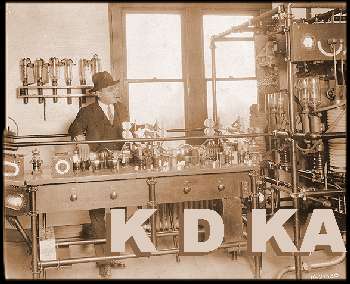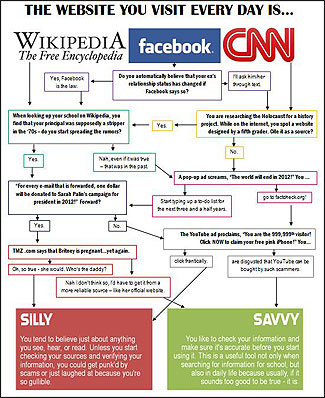America's news media in 1776 barely resembled those of today and it's a safe bet the news media of 2076 will barely resemble those of today.
| Publick Occurrences, Both Foreign and Domestick |
1769 In Connecticut, Isaac Doolittle builds the first printing press made in American.
1791 The First Amendment to the U.S. Constitution forbids Congress from making any law "abridging the freedom of speech, or of the press."
1823 A steam driven printing press is invented by Jonas Booth.
1833 America's first penny press newspaper is Benjamin Day's New York Sun. It attracts a wide audience.
1835 James Gordon Bennett's New York Herald becomes the most widely read newspaper in the United States.
1841 Horace Greeley publishes New York Tribune.
1844 A telegraph line stretches from Washington, D.C., to Baltimore, Maryland, makes it possible for newspapers to offer timely coverage of distant events.
1846 The U.S. Congress awards printing contracts to the lowest bidder. Previously, contracts had been given to loyal partisan printers.
1847 Robert Hoe's four-cylinder rotary press is capable of printing 8,000 pages per hour.
1849 A group of publishers start an organization to bring news from Europe. It will become the Associated Press (AP).
1859 The New York Clipper publishes the first baseball box score by Henry Chadwick. It lets newspapers standardize their game summaries.
1883 Joseph Pulitzer buys the New York World from Jay Gould for $346,000.
1887 George Hearst appoints his son William Randolph Hearst editor of the San Francisco Examiner.
1895 William Randolph Hearst buys the New York Morning Journal, renams it the New York Journal and converts it to a penny paper like James Gordon Bennett's New York Herald.

The Yellow Kid cartoon in 1898 click image to enlarge |
1898 The New York Journal blames Spain for a mysterious explosion that sank the USS Maine in Havana Harbor, Cuba. That helps push the United States into war with Spain. The sensational coverage is an example of yellow journalism.
1904 William Randolph Hearst stars the Los Angeles Examiner and the Boston American. He will eventually starts and buys papers in many American cities. By 1930, his holdings will include 28 newspapers.
1911 Joseph Pulitzer's will leaves $2 million to Columbia University to establish a graduate school of journalism and the Pulitzer Prize. The prizes have been awarded since 1917 recognizing achievements in journalism, literature and music.
1920 Radio station KDKA begins broadcasting regularly scheduled programs at Pittsburgh, Pennsylvania.

Radio Station KDKA in Pittsburgh in 1920 |
1934 The U.S. increases regulation of broadcasting with founding of the Federal Communications Commission (FCC).
1941 Orson Welles's movie about William Randolph Hearst, Citizen Kane, premieres in New York City.
1941 The FCC lets 18 television stations begin commercial broadcasting. CBS and NBC begin immediately. Hardly anybody watches. Station WCBW demonstrates the news potential with its bulletins on the Japanese attack on Pearl Harbor.
1948 More television stations begin broadcasting after the end of World War II and people begin to buy receivers and watch programs. Radio stations begin to switch from network entertainment programs to local DJ music shows.
1955 Compatible color television begins to catch on.
1969 The Pentagon invents a communication system that will become the Internet.
1971 The New York Times publishes Daniel Ellsberg's Pentagon Papers, series of classified government Vietnam War documents. President Richard Nixon gets a court injunction ordering The Times to stop publication of the document, but the U.S. Supreme Court finds the injunction is unconstitutional prior restraint.
1971 Washington Post reporters Bob Woodward and Carl Bernstein cover a burglary at the offices of the Democratic National Committee in Washington, D.C.'s Watergate Hotel. They eventually link the break-in to a dirty tricks campaign led by advisers to President Richard Nixon whose attempts to cover up the misdeeds lead to his own resignation in 1974.
1973 Australian Rupert Murdoch acquires his first American property, the San Antonio Express-News.
1980 Ted Turner starts the Cable News Network (CNN).
1988 The Internet opens to commercial users.

Time magazine cover April 12, 1993 |
1993 Mosaic, the first World Wide Web browser, is relased.
1994 Public awareness of the World Wide Web – the information superhighway on the Internet – awakens with news coverage of its potential. Yahoo! opens.
1995 The wiki is invented.
1996 Rupert Murdoch starts Fox News Channel on cable TV.
1997 Blogging starts.
1998 Internet search engine Google starts up.
2000 Y2K is relatively uneventful. However, free online classified ads at Craigslist will grow to serve 500 cities with 30 million postings a month. This depletes newspaper classified ad sales, an important source of revenue.
2001 Wikipedia is created. Apple starts selling iPods.
2003 The virtual world Second Life is created on the Internet. MySpace starts.
2004 Facebook begins collecting friends. Flickr shares its first photographs. Podcasting starts. An Internet news aggregator, Digg.com, lets users determine which news stories are most important.
2005 The Huffington Post internet news site mixes professional news gathering, opinion reporting and user-generated content. YouTube begins sharing videos.
2006 Twitter begins to tweet.

The Wall Street Journal |
2010 The Internet is well established as part of most Americans' news consumption. Two-thirds get some news online each day. Most also get news from other media. On the other hand, there are questions about print and local media and even whether there is a future for the mass-market magazine anymore.
2011 Advertising in local newspapers and on local television stations is down, while advertising on the Internet is up. Some newspapers have ceased publication of their print versions in recent years in favor of developing their online editions. Examples include the Pulitzer Prize winning Rocky Mountain News and the Seattle Post-Intelligencer.




